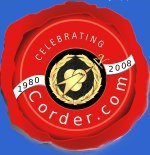
Corder Enterprises International
|
|
| The Green Datacenter |
E-Mail This Page
To a Friend.



VCP & VCIs
- state the architecture of the UNIX operating system;
- describe how a UNIX system is initialized and identify the various run levels;
- use selected UNIX software development tools for program development and maintenance;
- describe the logical and physical file system;
- perform UNIX system commands which manipulate files and directories and control processes;
- define processes and state how they are controlled;
- describe the I/O subsystem to include block and character device and streams implementation;
- describe the interprocess communications facilities;
- write, compile, and execute C language programs which examine UNIX internal data structures and display information about processes, the file system, and kernel operations; and,
- write and execute programs which illustrate the use of the UNIX pipe, messages, semaphores, shared memory, and signals interprocess communications facilities.
- Advanced UNIX Programming Student Guide and course notes.
- Diskette containing sample C programs used in class.
- CU001 - Fundamentals of UNIX or equivalent experience using UNIX.
- CU002 - Bourne Shell Programming or CU003 - Korn Shell Programming or equivalent experience using the UNIX shell.
- TECHNICAL Description OF THE UNIX OPERATING SYSTEM
- History Of UNIX
- Major UNIX Features
- System Architecture
- Kernel
- Shell
- File System
- Application Program Relationship
- C Language Interface
- Hardware Considerations
- UNIX System Documentation
- POSIX Standardization
- UNIX SYSTEM STARTUP
- System Initialization Sequence
- Startup Programs and Scripts
- Startup Control Files
- Run Levels
- Modifying System Startup
- UNIX SOFTWARE DEVELOPMENT TOOLS OVERVIEW
- make
- sccs
- sdb
- lint
- ar
- THE UNIX FILE SYSTEM
- Physical File System
- File System Format
- Super Block
- Inodes
- Structure of a Regular File
- Structure of a Directory
- Structure of Other File Types
- Creation/Deletion of a Physical File
- Mountable File Systems
- Logical File System
- File Concept
- Types Of Files
- Hierarchal File System
- Directories
- Path Names
- File Attributes
- File Access Permissions
- File Manipulation Commands
- Directory Manipulation Commands
- Special Files
- Efficient Use Of File Systems
- Physical File System
- UNIX PROCESSES
- Process Definition
- Process Creation and Termination
- Process States and Transitions
- Process Control
- Process Scheduling and Timing
- Process Priorities
- Daemon Processes
- Process Performance Limitations
- I/O SUBSYSTEM
- I/O Devices
- Block (Disk) Device Drivers
- Character (Terminal) Device Drivers
- Driver Interfaces
- Streams
- I/O Error Handling
- I/O Devices
- INTERPROCESS COMMUNICATIONS
- Overview of UNIX IPC Facilities
- Pipes
- Messages
- Semaphores
- Shared Memory
- Signals
- SYSTEM PERFORMANCE, MANAGEMENT AND SECURITY
- Shells and User Environment
- System Configuration, Tuning, Generation
- System Performance Analysis
- System Accounting
- Security
- System Error Logging
- Analyzing and Correcting System Errors
- COURSE CONCLUSION
CU030 - Advanced UNIX Programming
Length: 5 Days
Description
This course is designed for system and application programmers, system analysts, and engineers responsible for supporting a UNIX operating system and/or for system and application software development. The course provides detailed discussions and hands-on examination of the structure of a UNIX system, the physical and logical file system implementation, process control mechanisms, I/O subsystem, kernel operations, memory management, interrupt handling, and interprocess communications. Throughout the course the information presented is related to the attendee through: 1) the execution of common UNIX user/administrator commands; and, 2) writing, compiling, and executing example 'C' language programs which examine and display internal system data structures on a live UNIX system.Course Objectives
Upon completion of this seminar the attendee will be able to:Course Materials
Prerequisites
Course Content
|
Course Flyer |
| |

